The Thailand – Burma Death Railway
June 5
On Friday I took a trip to see the (in)famous Death Railway which is a railway connection between Thailand and Burma. The Burma-Siam (Thailand) railway, built by Commonwealth, Dutch and American prisoners of war, was a Japanese project driven by the need for improved communications to support the large Japanese army in Burma. The Japanese aimed at completing the railway in 14 months and work began in October 1942. The line, 424 kilometers long, was completed by December 1943. During its construction, approximately 13,000 prisoners of war died and were buried along the railway (an estimated 80,000 to 100,000 civilians also died in the course of the project). The graves of those who died during the construction and maintenance of the Burma-Siam railway (except for the Americans, whose remains were repatriated) were transferred from camp burial grounds and isolated sites along the railway into three cemeteries at Chungkai and Kanchanaburi in Thailand and Thanbyuzayat in Myanmar.
I visited the cemetery in Kanchanaburi.
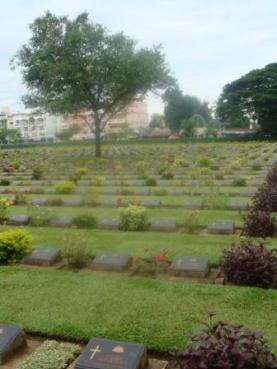
Kanchanaburi War Cemetery
Kanchanaburi is 129 kilometers of Bangkok and is only a short distance from the site of the former ‘Kanburi’, the prisoner of war base camp through which most of the prisoners passed on their way to other camps.
The Kanchanaburi War Cemetery was created by the Army Graves Service who transferred to it graves along the southern half of railway, from Bangkok to Nieke. More than 5,000 Commonwealth and 1,800 Dutch casualties are buried or commemorated in the cemetery. It is a very beautifully kept and maintained place.
After that I visited the JEATH War Museum. JEATH stands for Japan, England, America, Australia, Thailand and Holland, representing the nationalities of the prisoners of war who were forced to work on the construction of the famous “Bridge on the River Kwai”.
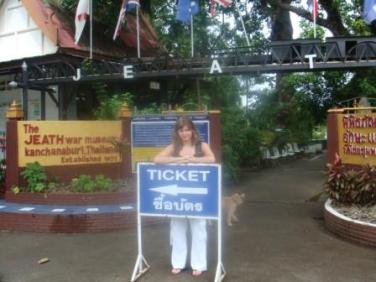
JEATH Museum in Kanchanaburi
The first thing that strikes you when you visit the museum is the bamboo hut with a collection of photographs displayed. The hut is a replica of the conditions the POW’s were forced to live in. Terrible leaving conditions, high temperature, mosquitoes, and small portions of food all this cause a death of thousands of young men. But some of the prisoners survived and they met few years ago in the same place to tell their story. The museum displays pictures of those who survived as well as many graphic images of the terrible conditions they lived.
The museum exhibits the paintings and the illustrations of the death railway construction events; the process of the construction and the prisoners’ lives. It also displays prisoners’ belongings, for example, clothes, knives, walky talky as well as various types of bombs.
After that I head towards the Bridge on the River Kwai.
The River Kwai and the black iron bridge over it, has gained international fame thanks to the several movies and books. One of the movies is an Oscar-winning The Bridge on the River Kwai (1957) by David Lean. The film is work of fiction but in 1997 was deemed “culturally, historically, or aesthetically significant” and selected for preservation in the United States Library of Congress National Film Registry.
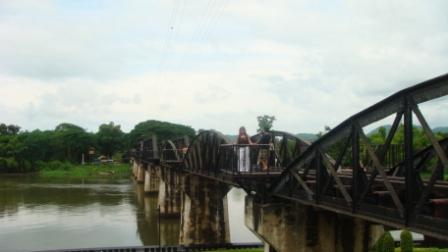
Bridge on the River Kwai
The bridge is a part of the Death Railway linking Thailand with Burma. Still in use today, the bridge was the target of frequent Allied bombing raids during World War II and was rebuild after war ended. The curved spans of the bridge are the original sections.
Since a daily train is still following the historical route from Kanchanaburi to Nam Tok Railway Station I decided to take the train.
That was my third time in a train and I hope that I will hove more opportunities to travel by train. You can meet so many people and see so much… The landscape was beautiful. Few pictures and a movie are presented below.
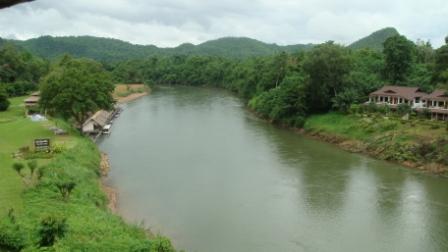
River Kwai
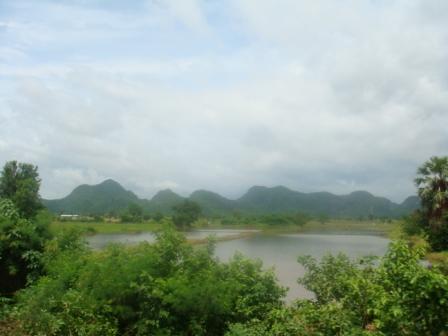
River Kwai
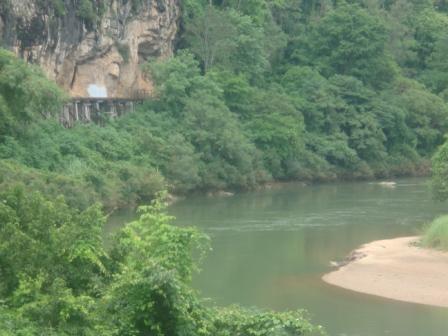
River Kwai
July 5, 2009 at 4:54 am
I was searching for many articles and i find your post great, very interesting writing.. Thank you!
Very nice page.. I like it!! 🙂
July 6, 2009 at 9:09 pm
Thoughtful post, glad you enjoyed our hometown of Kanchanaburi. You are able to see through the superficial to the underlying beauty